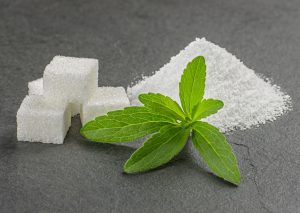 Introduction: The Three Princes of Serendip, where Serendip is the Classical Persian name for Sri Lanka, is a fairy tale in which the protagonists ‘were always making discoveries, by accidents and sagacity, of things they were not in quest of.’ Based on this, Horace Walpole coined the word serendipity in 1754 to mean inventions or discoveries made by accident. Science and technology offer many anecdotes of serendipitous discoveries and inventions. Here is the eighth such story in a series about serendipitous, patented inventions.
Introduction: The Three Princes of Serendip, where Serendip is the Classical Persian name for Sri Lanka, is a fairy tale in which the protagonists ‘were always making discoveries, by accidents and sagacity, of things they were not in quest of.’ Based on this, Horace Walpole coined the word serendipity in 1754 to mean inventions or discoveries made by accident. Science and technology offer many anecdotes of serendipitous discoveries and inventions. Here is the eighth such story in a series about serendipitous, patented inventions.
Thanks to millions of years of evolution, humans have developed a sweet tooth. It is because, in an environment where food was scarce, sweet things, such as fruit and honey, were sources of instant energy that was critical for survival. Now, we have food in plenty, but the attractiveness of sweets has not diminished. This and a sedentary lifestyle have brought a different problem – obesity and its concomitant problems. Added to this is the urge to stay slim to be fashionable. Hence, there has been a search for sweeteners without calories, and many “non-caloric” sweeteners have been invented. And interestingly, the inventions of several such sugar substitutes were serendipitous, at least to a certain extent. Here are four of those stories.
Constantin Fahlberg was a German chemist working in the Department of Chemistry at Johns Hopkins University in Baltimore. He was researching coal tar derivatives with Ira Remsen, who had founded the department, and his team. One day, he returned home from the lab, and went straight to dinner and found that the bread he was eating tasted surprisingly sweet. He soon realised that it was his hands and not the food itself that was sweet. He is said to have gone back to the lab and tasted the contents of all the containers he was using and found the source – a compound called ortho-benzoic sulfimide. He called it saccharin, meaning “of or resembling sugar.” Saccharine is supposed to be some 200 to 700 times sweeter than sucrose – table sugar. Realising the commercial potential of the new compound, he applied for both German and American patents to produce the compound in large quantities.
Cyclamate was discovered in 1937 by a graduate student, Michael Sveda, working in a laboratory at the University of Illinois. He was then working on the synthesis of anti-fever medication. It is said that he had put his cigarette down on the laboratory table, and when he picked it up again and put it in his mouth, he tasted something sweet. He tasted the contents of all the beakers he was working with and found the right one. He had accidentally discovered the sweet taste of cyclamate. It is around fifty times sweeter than table sugar.
He obtained a patent on the compound. It was bought by Dupont and later by Abbott Laboratories. Cyclamate received Food and Drug Administration approval in the US in 1958, but its use has been banned or restricted in different countries over time.
In 1965, James M. Schlatter, a chemist working for G. D. Searle & Company, synthesised aspartame as an intermediate step in the chemical synthesis of another chemical related to a hormone called Gastrin. This was related to work toward developing an anti-ulcer drug. While working in his laboratory, he wet his finger with his saliva to pick up a sheet of paper and discovered its sweet taste. He, along with others, then developed aspartame as an artificial sweetener and patented it. It is now manufactured and sold under various brand names and is said to be 200 times sweeter than table sugar. The name is derived from asparagus, as it is related to a compound found in asparagus and beetroot.
Scientists from Tate & Lyle, a global supplier of food and beverages, working with researchers Leslie Hough and Shashikant Phadnis of Queen Elizabeth College, discovered Sucralose in 1976. They were researching novel uses of sucrose and its synthetic derivatives. Phadnis was told to “test” a chlorinated sugar compound. According to an apocryphal story, Phadnis thought Hough had asked him to “taste” it, and he did just that. He found the compound to be exceptionally sweet – about 600 times sweeter than table sugar. Tate & Lyle applied for a patent in 1976, which was granted in the US in 1984.
One of the early sugar substitutes was Erythritol, discovered by the Scottish chemist John Stenhouse and isolated in 1852. Another substitute Xylitol, discovered by the German Nobel laureate Emil Fischer (1902, Chemistry) and his student Rudolf Stahel. Its commercial development as a sugar substitute was driven more by the sugar shortage during World War II than a search for a low-calorie sweetener. It is about as sweet as table sugar but has about 40% of its nutritional calories. Both these are naturally occurring compounds and are still used in the food and pharmaceutical industry.
Author: J L Anil Kumar
First Published by: Lexology here



